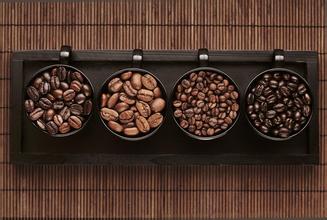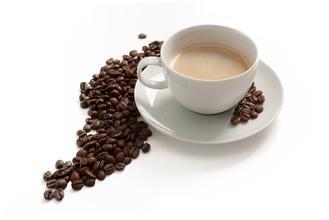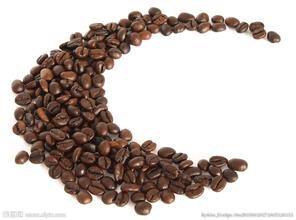Introduction of Columbia Coffee hand-made characteristic Brand taste and Flavor description method Grinding scale Manor
1. Calculation method of caffeine content in a cup of coffee: coffee beans used (g) × caffeine percentage of this kind of beans. In other words, if you use 18 grams of Yega to make coffee, regardless of hand brewing, siphon, French pressure, Italian machine, American machine, or Philadelphia pressure, use Yega's 1.4% caffeine ratio, multiplied by 18. This formula is only a rough calculation, not very accurate, but for our questions, it reflects the answer. Why is this so? because of these extraction methods, the best extraction rate is 18% Murray and 22%. At this time, caffeine, as a more soluble substance, is close to complete extraction. - -- 2. When using different beans How does caffeine content change? The previous comparison is the comparison of caffeine content in different extraction methods of the same kind of beans. Well, when using different coffee beans, in fact, if the amount of beans used is the same, the caffeine content of ESP is often higher than that of hand flushing. Because robusta beans are rarely used in hand flushing, and robusta beans are often used in matching beans. It is well known that the caffeine content of the same amount of Luodou is much higher than that of Arabica beans.
On the other hand, water temperature is also an important index that affects the taste of coffee. When I personally make coffee, I am used to using a water temperature of about 90 degrees, which is, of course, in line with my grinding thickness. You don't have to be so precise, in fact, you can fix a personal habit, such as standing for 1 minute or 1.5 minutes after the water is fully boiled, of course, you have to adjust the temperature in the room according to the temperature in the room. There is estimated to be a temperature difference between winter and summer.
The next important factor is the soaking time of the coffee.
This is easy to understand. The longer you soak, the more substances will be extracted, and the flavor will be about strong, and vice versa. However, what factors will affect the soaking time? let's elaborate on them one by one.
First of all, the degree of coffee grinding, coarse filter fast, fine filter slow, which we can imagine, fast filtration, per unit of water natural coffee and water contact time is short, the taste will be light, and vice versa.
Then there is the filter, one of the filters we commonly use is filter paper, a good filter paper should be odorless, good filter water. I once used a kind of inferior filter paper, which is very thin, but the filtration speed is very slow, only water injection, but not dirty, which will inevitably lead to a long soaking time. In addition, common filters include flannel and metal. It is generally believed that these materials, filter paper filterability is the best, the disadvantage is high cost, may have the taste of pulp. Flannel, is also generally considered to be excellent filtering effect, the production of coffee taste soft, mellow, but repeated use, flannel is very easy to absorb the taste of coffee, resulting in cross-contamination. Finally, there is a metal filter, which is considered to be the worst filter, and it also makes some very fine coffee powder difficult to filter out.

Important Notice :
前街咖啡 FrontStreet Coffee has moved to new addredd:
FrontStreet Coffee Address: 315,Donghua East Road,GuangZhou
Tel:020 38364473
- Prev

How to drink Ecuadorian organic coffee roasted coffee? Introduction to Manor with Flavor characteristics
Introduction to Ecuadorian Coffee beans in the mid-15th century, there were legends about enchanted mysterious islands among fishermen fishing in the Pacific Ocean in western South America. It is said that the islands can sometimes be seen clearly from a distance, but when the ship approaches, it disappears again; sometimes it looks like a galleon, sometimes it shows the shape of a witch. The fishermen call these islands
- Next

Introduction to the grinding scale of the quality characteristics of the flavor description treatment method of Las Haas Manor in Costa Rica
Costa Rica's Las Haas Manor produced 3 million packets of coffee (60 kg each) and exported 1.87 million packets of coffee from 2002 to 2003. 40% of the exported coffee is high-quality refined coffee, which is known internationally as GOURMET coffee. In the international market, refined coffee costs an average of US $93.61 per bag (46kg) (FOB), which is US $19.56 higher than that of ordinary coffee.
Related
- Detailed explanation of Jadeite planting Land in Panamanian Jadeite Manor introduction to the grading system of Jadeite competitive bidding, Red bid, Green bid and Rose Summer
- Story of Coffee planting in Brenka region of Costa Rica Stonehenge Manor anaerobic heavy honey treatment of flavor mouth
- What's on the barrel of Blue Mountain Coffee beans?
- Can American coffee also pull flowers? How to use hot American style to pull out a good-looking pattern?
- Can you make a cold extract with coffee beans? What is the right proportion for cold-extracted coffee formula?
- Indonesian PWN Gold Mandrine Coffee Origin Features Flavor How to Chong? Mandolin coffee is American.
- A brief introduction to the flavor characteristics of Brazilian yellow bourbon coffee beans
- What is the effect of different water quality on the flavor of cold-extracted coffee? What kind of water is best for brewing coffee?
- Why do you think of Rose Summer whenever you mention Panamanian coffee?
- Introduction to the characteristics of authentic blue mountain coffee bean producing areas? What is the CIB Coffee Authority in Jamaica?

